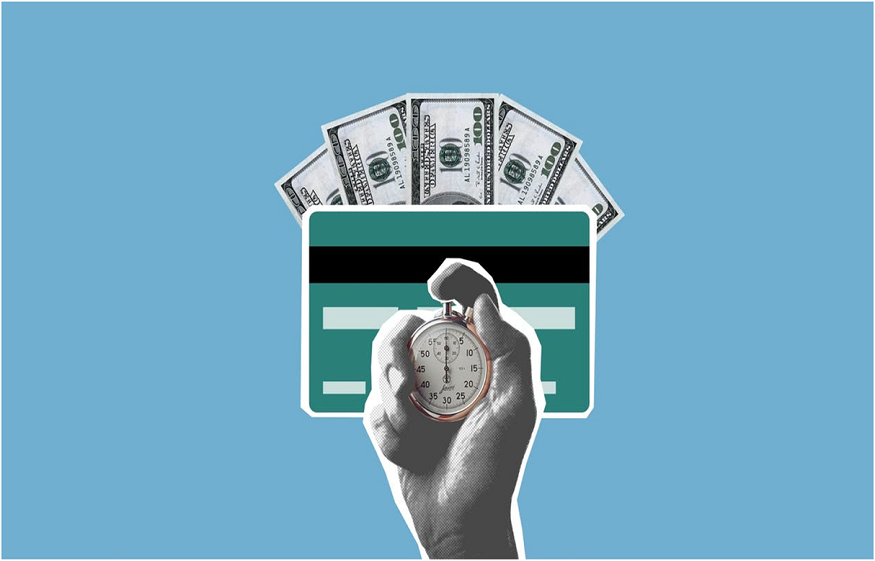It can be difficult to know when the right time is to refinance your credit cards. With so many options out there, it’s hard to know which one is best for you.
Some people take this route because they have improved their credit scores and want to pay less every month. When exploring your options, you can always borrow from a bank, credit union, or a friend to cover some of your debts for the month. However, another option is refinancing your card, which can be a hassle-free experience overall.
When is the Right Time to Refinance?

You might get an email about an offer from your bank that you’re qualified for a lower interest rate. Others are proactive in asking other financial institutions if they could give them a fixed interest rate with lower premiums. If you decide to apply, make sure your credit score is in good shape.
You’ll need a score of at least 680 to qualify for most of the best offers. Shop around and know the various deals that are available from different companies and make sure to compare rates. Look for those with low-interest rates and fees. Prepare to make the payments on time and read the terms and conditions before signing the paperwork.
When you’re exploring your options, here are some things to know about:
Interest Rate. A good consumer loan will offer a very low-interest rate for good payers with a high credit score. This will mean that you owe less money and save up every month. Look for the ones who are reasonable with the interest rates so you know that you’re getting the best deals.
The Terms. Most terms can be as short as one month, while others can be up to 10 years. This will depend on the financier and the agreement on the loan.
Fees. There are origination and closing fees when you take out new debt, so be sure to include them in your overall calculations. If you’re fine with the figures, then go ahead and sign up for that loan.
Amount. Many individuals don’t actually need to borrow a large amount to cover most of their debts. They just need a substantial one to help them get through a troubled financial phase. This is why it’s important to look for trusted financiers in the industry who are willing to help you get out of your situation.
Following these tips can save a lot of money by refinancing your debt with a credit card or a personal loan. Just be sure to do your homework and understand the terms before signing up.
What’s the Process?
If you’re looking to refinance your loan, one option is to use a credit card. This can be a good strategy if you have a good credit score and can find a card with a low-interest rate. Here are some tips that may help you out:
- Shop around for various companies. Just like when shopping for a mortgage, it’s important to shop around for the best terms available to your current situation. Look for those with a low-interest rate and no balance transfer fees.
- Make sure you can handle the payments. When consolidating your debt onto one credit card, you’ll need to make sure you can afford the monthly payments. Otherwise, you could end up damaging your score even further.
- Use the grace period wisely. Many cards offer a grace period on balance transfers, which means you won’t be charged interest on the transferred balance for a certain period. Make sure you pay off the balance before the end of the grace period, or you’ll be stuck paying interest on it.
- Close the old cards. Whenever possible, close the old accounts and don’t dig further into debt when you’re refinancing. It can be tempting to go on a shopping spree after the credit gets replenished, but it’s better to wait until you pay off everything.
Advantages and Disadvantages
PROS
Lower interest rates: One of the biggest advantages of this step is that you can usually get a lower interest rate than you would with a traditional loan. This can save you hundreds or even thousands of dollars in interest over the debt you can use on purchasing groceries and other necessities.
Flexible repayment terms: Another advantage of using a credit card to refinance is that you often have more flexibility regarding repayment terms. With a traditional loan, you typically have to make fixed monthly payments. Still, with a credit card, you can often choose from various repayment options, including making minimum payments, paying off your balance in full each month, or making larger payments to get out of debt faster.
No prepayment penalties: Some loans come with prepayment penalties that charge you a fee if you settle the balance of your kredittgjeld early. Credit cards generally don’t have these fees, so you can save money by paying off your loan sooner than expected.
CONS
Getting buried in debt. The refinancing process doesn’t magically erase the debts that you have. Instead, it will allow you to start over again but with a lower interest. If you’re not careful, you might be buried in debt again when you begin shopping using your old cards.
Other Things to Know
There are a few alternatives to refinancing with credit cards. A personal loan may also help you get the funds that you need without relying on the bank or other financial institution’s approval. The equity cam also be used as a line or credit since many individuals might already be owning their homes. It’s a good idea if you have substantial equity in your home and can qualify for a low-interest rate.
Refinancing with credit cards can be a great way to save money on interest and get out of debt faster. However, it’s important to do your research and understand the process before you jump in. With a little planning and expert advice, you can make refinancing work for you and save yourself a lot of money in the long run.



